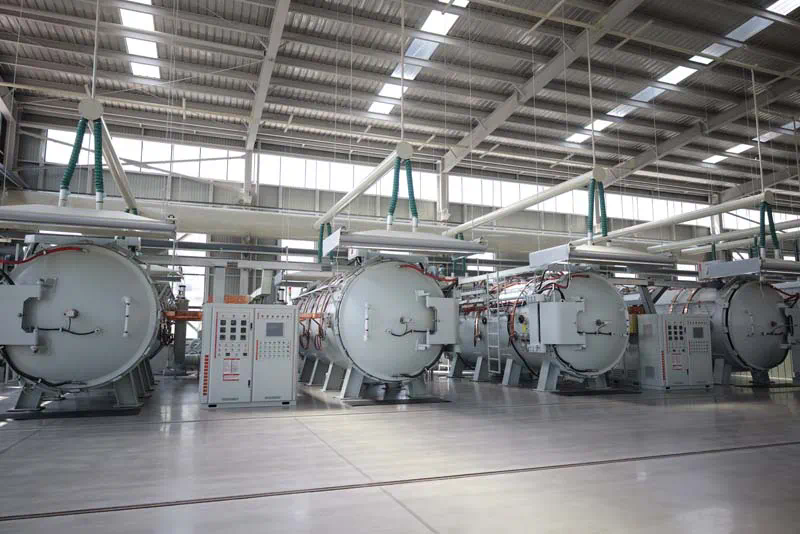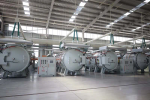Choosing a Silicon-Carbide Crucible for High-Temperature Atmospheres: A Comprehensive Guide
When working with high-temperature applications, selecting the right crucible is critical for ensuring both performance and safety. Silicon carbide (SiC) crucibles are commonly used in such environments due to their excellent thermal stability, mechanical strength, and resistance to chemical attack. Whether you’re involved in metal melting, casting, or other high-temperature processes, understanding how to choose the appropriate silicon-carbide crucible can significantly impact the efficiency, longevity, and safety of your operations.
In this guide, we will explore the factors that influence the selection of a silicon-carbide crucible for high-temperature atmospheres. This article will cover everything from the material properties of silicon carbide to practical considerations like size, shape, and durability. We’ll also discuss the benefits of SiC crucibles in comparison to other materials and address common issues users may encounter. By the end of this article, you will be equipped with the knowledge to make an informed decision when purchasing a silicon-carbide crucible.
Understanding Silicon Carbide and Its Properties
Silicon carbide is a compound made up of silicon and carbon, forming a material known for its hardness and heat resistance. SiC is typically produced through a process called carbothermic reduction, where silica (SiO2) reacts with carbon at high temperatures to form silicon carbide. This material has a wide range of applications due to its exceptional physical properties, especially in high-temperature settings.
Key Properties of Silicon Carbide Crucibles
1. Thermal Stability: One of the most crucial attributes of silicon carbide crucibles is their ability to withstand extremely high temperatures. SiC crucibles can typically endure temperatures ranging from 1600°C to 2500°C, depending on the specific formulation and grade. This makes them ideal for processes such as metal melting, alloying, and other high-temperature operations.
2. Chemical Resistance: Silicon carbide is highly resistant to oxidation and chemical attack from many substances, including molten metals. This resistance is crucial in environments where reactive chemicals, corrosive materials, or molten alloys are involved. The SiC surface tends to form a protective layer that enhances its resistance to wear and tear.
3. Mechanical Strength: SiC crucibles exhibit high mechanical strength, which allows them silicon carbide crucible australia to maintain structural integrity under intense thermal shock and stress. This is particularly important in industries like metalworking, where crucibles are subject to rapid temperature fluctuations and physical handling.
4. Thermal Conductivity: While silicon carbide is not as conductive as materials like graphite, it still possesses good thermal conductivity compared to many other ceramics. This ensures even heat distribution within the crucible, which is essential for uniform melting or casting processes.
5. High-Temperature Resistance to Abrasive Wear: Due to its hardness and ability to withstand physical wear, silicon carbide is less likely to degrade or crack when exposed to repeated thermal cycling and abrasive forces, making it an ideal choice for environments where durability is essential.
Key Considerations When Choosing a Silicon-Carbide Crucible
When selecting a silicon-carbide crucible for a high-temperature application, several factors must be taken into account. These considerations help ensure that the crucible will perform effectively over its intended service life, providing optimal results in terms of heat distribution, durability, and safety.
1. Temperature Range
Different crucibles are designed to handle different temperature ranges, so the maximum temperature your process will reach is one of the first things you need to consider. SiC crucibles are capable of withstanding very high temperatures, but the exact temperature tolerance can vary by manufacturer and product grade. For instance, certain SiC crucibles can handle temperatures up to 2500°C, while others might be limited to 1600°C to 1800°C. Be sure to match the crucible’s specifications with the peak temperature required for your specific application.
2. Size and Shape of the Crucible
The size and shape of the crucible are essential for accommodating the volume of material you plan to melt or process. Crucibles come in a variety of shapes—round, square, conical, and even custom geometries for specialized applications. It’s crucial to choose a crucible that not only fits your operational needs but also ensures efficient heat distribution.
In addition to size and shape, the thickness of the crucible’s walls should be considered. A thicker wall may provide additional insulation, but it can also increase the weight of the crucible and slow down the rate of heating and cooling. On the other hand, a thinner wall may heat up faster but could be more susceptible to thermal shock. Finding the right balance is key to optimizing both the performance and durability of the crucible.
3. Purity of Materials
The purity of the silicon carbide used in the crucible is an important consideration. High-purity SiC crucibles offer enhanced thermal and chemical stability, which can be particularly beneficial when working with delicate materials or reactive substances. Low-quality or impure SiC may contain other minerals or impurities that could negatively affect the material being processed, especially in applications requiring high precision and minimal contamination.
In many high-end applications, the purity of the crucible material can also affect the longevity of the crucible. High-purity SiC is less likely to degrade over time, meaning that your crucible may last longer and provide better value in the long run.
4. Thermal Shock Resistance
Thermal shock resistance refers to the ability of a material to withstand rapid temperature changes without cracking or breaking. SiC crucibles are known for their excellent thermal shock resistance, which makes them a reliable choice for high-temperature applications. However, it’s important to consider how rapidly temperature fluctuations occur in your process. If your process involves sudden cooling or heating, such as when molten metals are poured into a crucible or when there is a rapid temperature drop after heating, you should ensure that the crucible is designed to handle such stresses.
5. Compatibility with Molten Metals
Silicon carbide crucibles are generally compatible with most common metals and alloys, but some metals, especially those with high melting points, can react with the SiC material over time. For example, metals such as aluminum, copper, and lead do not typically pose a significant threat to SiC crucibles. However, highly reactive metals like titanium, magnesium, or sodium may cause degradation of the SiC material. It’s essential to verify that the crucible is suitable for the specific metals you plan to work with.
In addition, some SiC crucibles may be coated or treated with additional materials to enhance their resistance to certain molten metals or chemicals. These coatings can improve the crucible’s longevity and provide better protection against contamination.
6. Cost Considerations
While silicon-carbide crucibles offer excellent performance, they can also be relatively expensive compared to other types of crucibles, such as clay-graphite or graphite crucibles. The price of a crucible typically reflects its quality, size, and specific material formulation. When evaluating cost, consider not only the initial purchase price but also the long-term cost associated with the crucible’s durability, performance, and the number of cycles it will last.
In some cases, opting for a higher-end SiC crucible may offer better value in the long run, as it will have a longer lifespan and better performance. It’s also worth considering the total cost of ownership, which includes maintenance, cleaning, and replacement costs.

Advantages of Silicon-Carbide Crucibles
1. Longer Service Life: One of the major advantages of SiC crucibles is their extended service life compared to other materials. Due to their high resistance to thermal shock, oxidation, and mechanical stress, SiC crucibles can withstand multiple cycles of heating and cooling without breaking down. This durability translates into fewer replacements, saving you money and downtime.
2. Better Thermal Efficiency: Silicon-carbide crucibles provide better thermal efficiency than many alternatives. The material’s good thermal conductivity ensures that heat is distributed evenly, helping to prevent hot spots and ensuring that the material inside the crucible melts more uniformly. This can improve the overall efficiency of your melting or casting processes.
3. Resistance to Contamination: Unlike some other materials, silicon carbide is less likely to leach contaminants into the materials being processed. This is particularly important in industries where purity is critical, such as the production of high-quality metals or advanced materials.
4. Minimal Expansion and Contraction: SiC has a relatively low thermal expansion rate, meaning that it is less likely to crack or deform when exposed to rapid temperature changes. This characteristic makes SiC crucibles particularly well-suited for operations that involve frequent temperature cycles.
Conclusion
Choosing the right silicon-carbide crucible for high-temperature applications is a crucial step in ensuring that your operations run smoothly, efficiently, and safely. By considering factors such as temperature tolerance, size, shape, material purity, and compatibility with the materials you’re working with, you can select a crucible that best suits your needs. SiC crucibles are a reliable choice for a wide range of high-temperature processes, offering durability, chemical resistance, and thermal stability that can greatly enhance your productivity and reduce costs in the long term.
Ultimately, the key to making the best choice lies in understanding the unique demands of your process and ensuring that the crucible you select meets those requirements. With the right SiC crucible in hand, you can ensure the success of your high-temperature operations, from metal casting to material processing, with confidence and precision.
https://devicesplayer.com/
